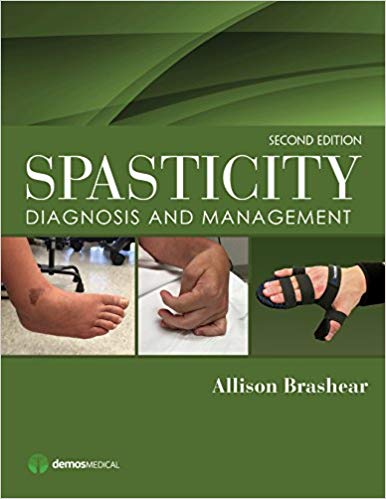
"… [A] useful reference for professionals and trainees who take care of patients with spasticity. It can also be a useful tool for researchers and for clinical trials… I believe this new edition will help the reader better understand the spectrums of clinical presentations and the strategies of treatment regarding spasticity."
–Jin Jun Luo, Departments of Neurology and Pharmacology, Lewis Katz School of Medicine at Temple University, Journal of Neurology & Experimental Neuroscience
Since publication of the first edition, Spasticity: Diagnosis and Management has been the defining reference and go-to source for physicians, therapists, and other health care providers who care for patients with spasticity. For this new updated edition, Dr. Brashear and a diverse team of specialists have come together to integrate new research, clinical trials, measurement tools, therapies, and other recent advances that reflect thisevolving field.
The book is organized into four sections, each of which covers a broad scope of material. The first section begins with a general verview of spasticityand its effects on movement in patients. Other chapters cover epidemiology and ancillary findings commonly associated with spasticity. Part II details assessment tools and measurements, treatment goals, and how to aim for realistic outcomes. Part III outlines various treatment modalities, including heavily updated chapters on the use of botulinum toxin in the upper and lower extremities, guidance techniques for injections, intrathecal baclofen, neuromodulation, surgery, physical therapy, and more. The last section, which contains several new chapters, discusses evaluation of outcomes and management of patients with stroke, traumatic brain injury, spinal cord injuries, multiple sclerosis, cerebral palsy, and cancer, followed by chapters on spasticity management in long-term care facilities and economic considerations.
This book remains the most comprehensive guide to diagnosis and management of spasticity in adults and children, and the revised second edition will continue to serve as an invaluable resource for professionals in any discipline who strive to provide quality care to spasticity patients.
Key Features:
- Revised edition of the premier clinical reference on spasticity
- Incorporates the latest advances in assessment and treatment
- Contains six entirely new chapters highlighting key topics including the Tardieu Scale and other measurement tools, ultrasound guidance for botulinum toxin management, spasticity in special populations, emerging therapies, and economic impact
- More than 200 figures and 70 tables accompany the updated text

